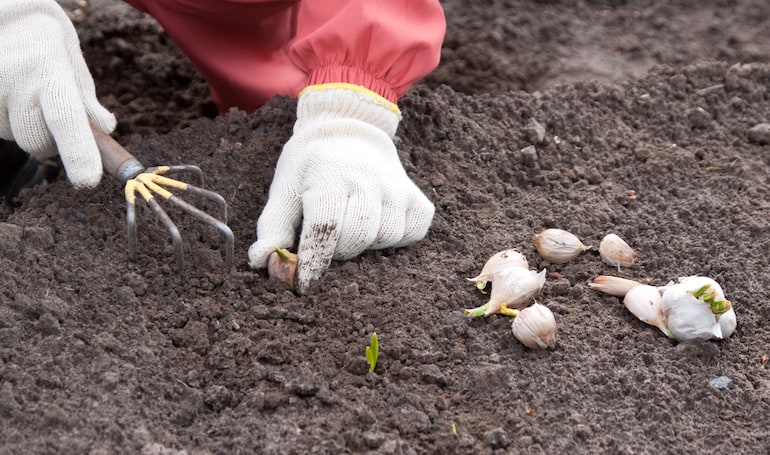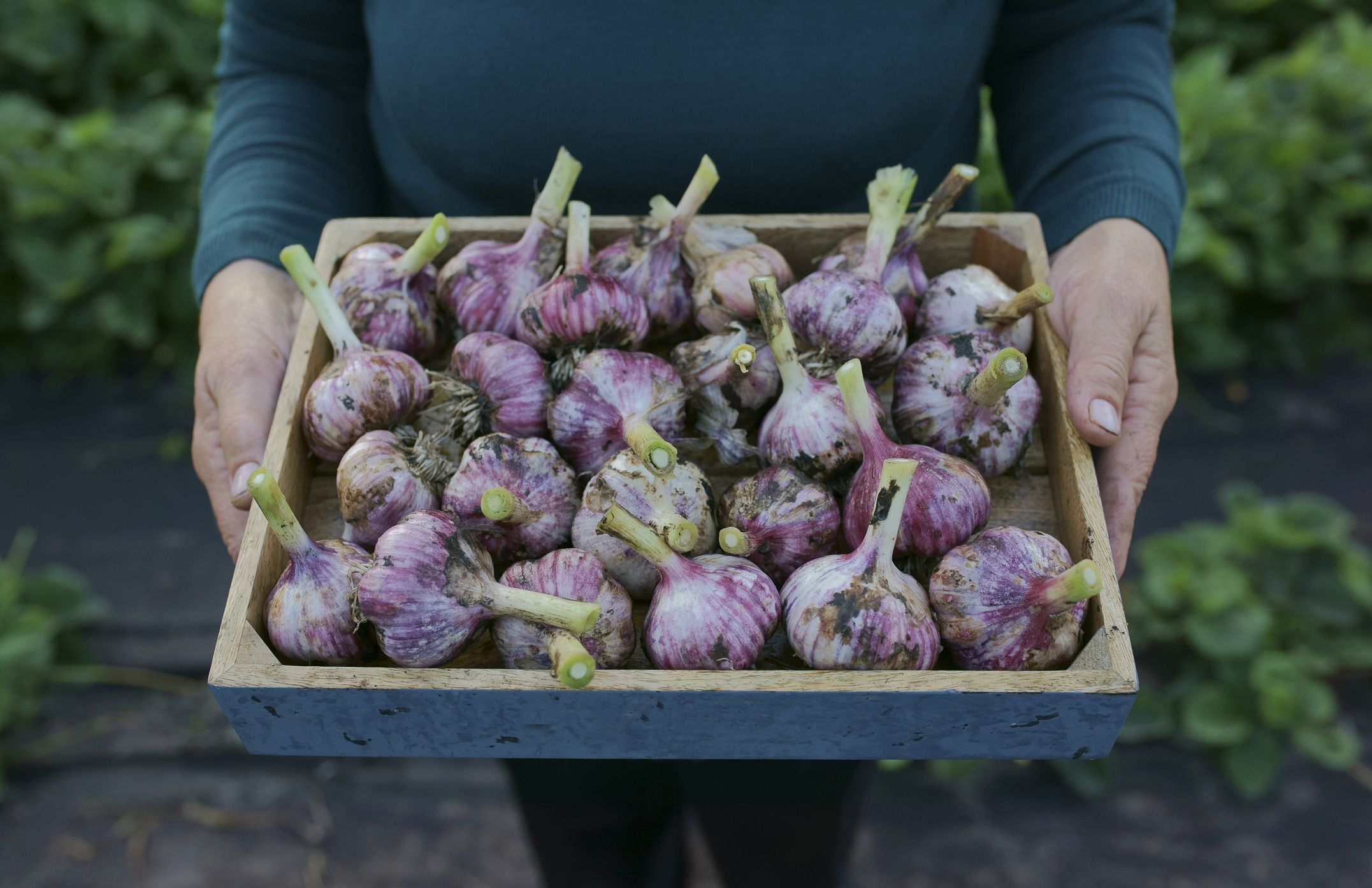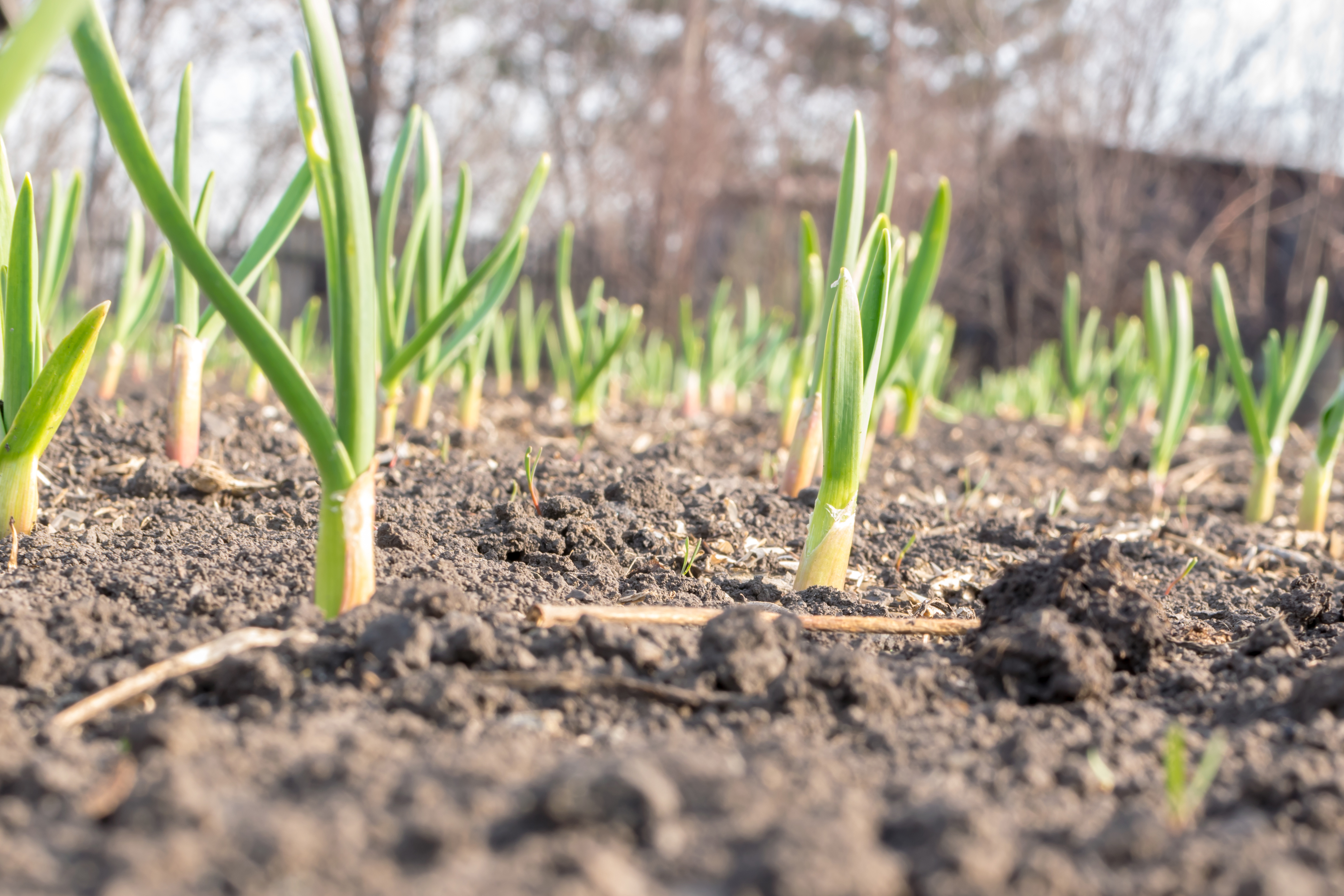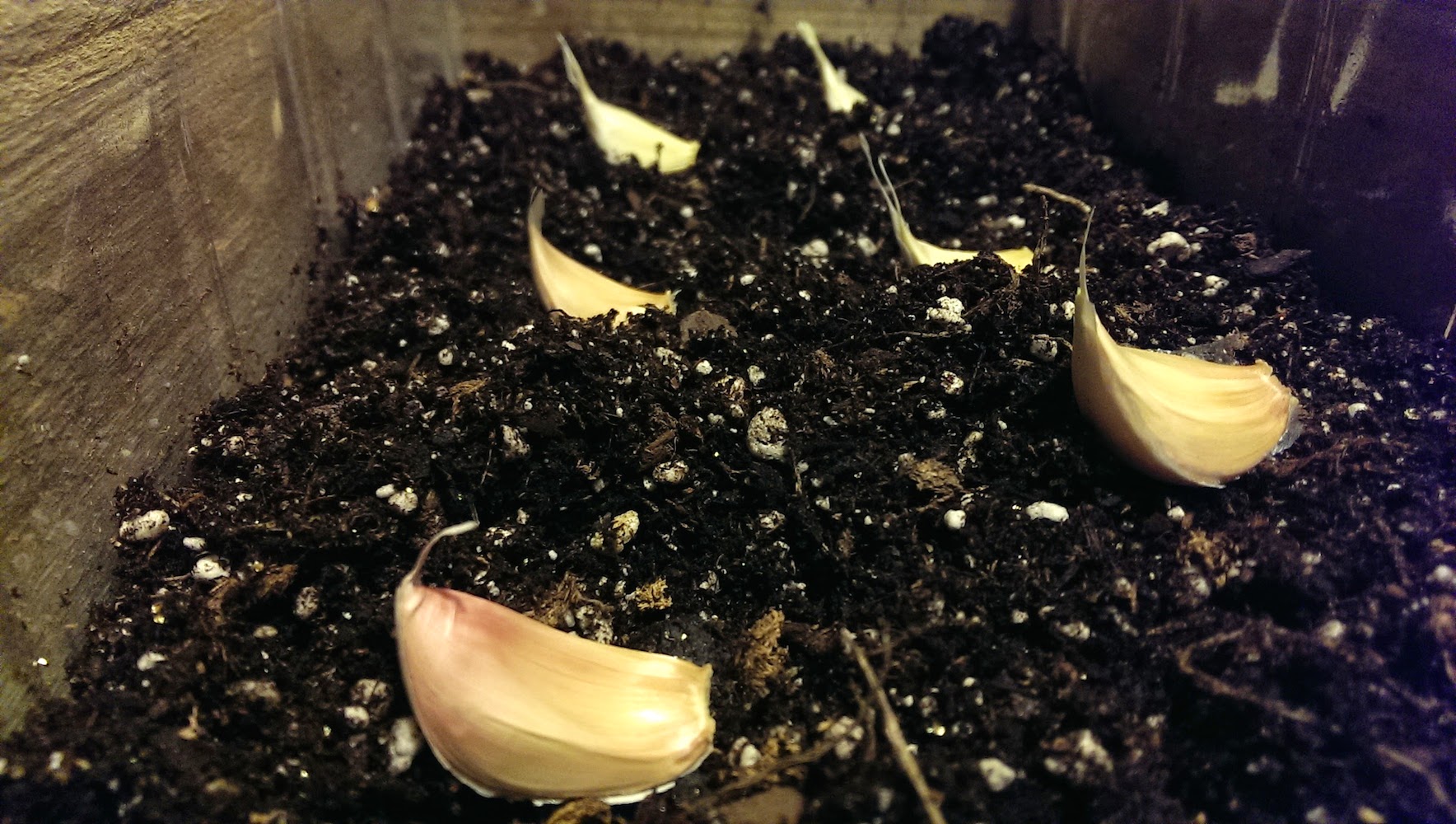Garlic is perhaps one of the most important spices we need in our everyday cooking. We all are very well aware of the importance of garlic, and there is no way anyone can deny that. So, do you want to plant this extraordinarily beneficial spice on your own?
Do you know how to plant garlic? If not, then follow this article and let your cooking bloom with the blessing of garlic. You can chop and sprinkle them on pizzas, eggs, or any other toppings as well.
Garlic plants are generally planted during the autumn season. From mid to almost late summer, the leaves of the garlic plants get yellow. It has a highly intensified flavor along with numerous uses and benefits.
Moreover, it also works as an insect repellent. The world has been provided with several home remedies just for the existence of garlic. Here goes a guide about how you can plant, harvest, store and save garlic in any situation.
Planting of garlic

Planting garlic is not a very tough thing to do. Yet, it needs some special technique. Knowing these techniques of how to plant garlic is necessary as not knowing them might make you fail to plant garlic.
When to plant garlic
Before you know how to plant garlic, you must know the right time to do this. Mostly between September and November, we generally find the plantation of garlic plants. The roots of these plants start developing during the fall of the winter, before the freezing of the ground. Foliage is almost completely produced by early spring. You can continue with the harvesting during summer. The temperature suitable to grow garlic is 40 degrees Fahrenheit. 4 to 8 weeks is the optimum requirement for the growth of garlic plants.
Moreover, do you know how to grow garlic plants during spring? This is possible only if you are having a long growing season. You won’t get large cloves, yet you can have the essence and a mild flavor of the garlic. The garlic would be delicious.
You are suggested to plant the cloves before early spring, that is, before mid-February to March if you are an inhabitant of the south or southwestern part of the earth. This is because hot weather is never suggestive for garlic plants. There is always a deliberate chance of them getting spoiled as the weather gets hotter.
Choosing and preparing a planting site

Choosing the proper planting site is extremely important for the perfect growth of any plant. So let us tell you the method and criteria required to choose the most suitable planting site.
Below are the mentioned criteria of how to choose and prepare a planting site:
●First of all, choose a large area for gardening, and this area should be such that it would receive 7- 8 hours of sunlight at an average per day.
●The preparation of the soil is also essential. It must be made free of weed. Next, mix an adequate amount of compost with the soil. Ensure that you don’t add it on a considerable amount, as this can have an opposite action.
●If you have planted your garlic plant during the spring, you must positively wait until the soil has drained. The best time to plant the garlic is when you find the soil is crumbling on its own.
●Do you know how to plant garlic and gain maximum production? To achieve a large amount of yield, you can always opt to plant it in raised beds. This always ensures promising drainage. Mulch the soil with almost 7 inches of aged hay after the freezing of the soil is finished. In this regard, you must notice that the raised bed should be 3 to 3½ feet wide and 11 to 11½ inches tall.
●Are you not forgetting something? Yes, one of the foremost requirements- fertilizer. You can add bone meal or fish meal as fertilizers. Ensure that you pour this a few inches below approximately the place where the garlic base is about to rest after plantation.
How to plant garlic

Know step by step the detailed process of how to plant garlic. The steps are as follows:
●Firstly, buy cloves from a seed company. I repeat, a seed company. Do not make the mistake of planting the clove you generally get from the store. They are not meant for planting. They may not be a suitable variety for your area. Furthermore, they are a more challenging option for a better yield. This is because they are primarily treated to make the life of their shelf elongated.
●Diseased clove is, of course, never recommended. Choose a large and healthy clove that is also fresh enough. The bigger the bulb of the clover, the more beneficial variety it will yield the upcoming season.
●The preliminary work you need to do a few days before planting the garlic plant is to break the cloves away from the bulb. But don’t ever discard the papery husk that is attached to each clove.
●Now comes the time of placing the clove. Place each one 3 to 4 inches apart from the other and also 2½ inches deep into the soil. Put the cloves in an upright position. The side of the wide root should be facing down, and the pointed end should be facing up.
●Arrange them in rows. Again each row must be 13 to 15 inches away from each other.
Taking care of garlic

Regarding how to plant garlic, taking care of the garlic plant is another essential activity you must be highly conscious of. Just as a baby needs the proper care to grow up, a plant is also likely to respond more gracefully if the proper care is delivered to them.
Also Read: How to Plant Rose Cuttings: An Excellent Guide
How to grow a garlic
Following are the suggestions you might require while growing your garlic plant:
●To confirm adequate overwintering, the gardeners of the northern region should mulch their plants heavily with the help of a straw.
●Whereas during the spring, you should necessarily eliminate this mulch. Moreover, after the risk of destruction due to frost is over, mulching is no longer needed. Mulching was initially essential to save the young plants as they cannot tolerate temperatures below 20 degrees Fahrenheit.
●With the onset of warmer temperatures during spring, shoots are about to emerge through the soil.
●Eradicate any flower shoot popping up during this time. As flower shoot development during this time can make the bulb size vigorously small.
●Fertilization is to be done during the early time of the spring season. Side dressing is the most suggested fertilization method. Try to use nitrogen-rich fertilizer for your garlic plant. Some of the fertilizers you can use are blood meal and chicken manure. You can also buy pellet fertilizer from the store.
●Keep an eye on them. As soon as you see swelling of the bulbs, fertilize them once again. It generally occurs during the initial dates of May in most places.
●Until it is spring, weed is never a problem. Yet you are recommended to make the planting site completely devoid of weed. Garlic nevertheless demands all convenient nutrients.
●Do you know that garlic is a heavy feeder? It demands a proper amount of nitrogen. If you are noticing yellow leaves, pour some more fertilizer.
●After every 3 to 6 days, watering is a compulsory activity. This special reminder is especially needed from mid-May to June. If you sense an intense lack of moisture during May and June, then irrigation to a depth of 2½ feet after every nine to ten days is suggested. Taper off the watering as you reach mid-June.
Protection from pests and diseases
It is another essential thing to know to have a clear idea about how to plant garlic. Every plant has a unique way of protecting itself from pests and diseases. Garlic is also not an exception. But yes, the problem with garlic plants is tiny. It is because garlic acts as a natural pest repellent. The most harmful and threatening pest for garlic is white rot. You should also be aware of the pest that harms onions.
Harvesting and storing of the garlic plant

Finally comes the harvesting and storing time of garlic plants after you have known how to plant garlic. Let’s discuss the ways you need to opt to store these plants with ease.
How to harvest garlic
There are some special ways to harvest garlic plants. Let us help you out with them in the following ways:
●The fall of the plant generally depends on the date you planted it. Though it is usually expected to fall within the timespan of late June to August.
●You are always provided with the ultimate tip of looking at the yellowing foliage. Harvesting should be done when the top of the plants gradually start turning yellow and finally fall. But make sure they don’t get dehydrated.
●Try digging a sample before digging the whole crop. Pick up a bulb and test it thoroughly to find out whether the crop is ready or not. Some garlic types get prepared earlier. So, bulbs are also frequently picked up while yellow, that is, during late June or early July.
●You can notice the garlic cover getting divided into plump cloves. The outer covering of the garlic skin will be dry, papery, and thick.
●You need to be confirmed that you are not pulling the bulb too early, as this can make the wrapping of the bulb thin and disintegrate. Again, if you keep it for too long, there is a high chance of the bulb splitting apart. The skin is also likely to split and expose the bulb. It increases the chance of disease. Furthermore, they won’t be kept in storage for long.
●Be very careful while harvesting the bulbs. Use a garden fork. Do not damage the root and root plate. The root plate is the junction joining the root and the bulb. Rub the surplus off by raising the plants aloft with intense care. Before the drying process, make sure that you do not remove any foliage.
●Curing must be done in a dry, airy, and shady spot. Leave it at great for two to two and a half weeks. You can hang them upside down to ensure air circulation uniformly throughout the whole garlic.
●When you see them getting completely dry, you can believe that they are ready for storage.
Storing of the garlic plant
After knowing how to plant garlic and how to harvest it, you essentially need to know the storing of the garlic. Here are the ways discussed that would help you in storing garlic properly:
●As soon as the wrappers are papery and dry, it is time to notice the roots. If they are dry, then storage is on its verge. The crown of the root should be hard enough. You can break apart the cloves very easily.
●Trimming of any roots and leaves is an essential activity. By removing the dirtiest wrappers and keeping the perfect one, you need to trim them. Also, eliminate the roots and the tops.
●A dark, dry, and cool place are suitable for the storage of bulbs. The optimum temperature for storing garlic is 40 degrees Fahrenheit. Garlic is not at all moisture-friendly. Storing it wherever there is moisture can bring destruction to the plant. Moreover, don’t think of storing it in a refrigerator. It is because, along with being cold, the refrigerator also contains a lot of moisture.
●Keep aside some of your best-harvested bulbs to gain a maximum profit the next season.
Recommended varieties of garlic
Now that you know how to plant garlic, you need to know which variety of garlic you should plant? The most important question, right? Variety largely determines the yield of the crop. So, know about the right variety to have larger production.
Generally, two types of varieties are recommended. They are:
●Softneck varieties are those that remain soft after harvesting. The name itself suggests its category. These are the braided types. Inhabitants of warmer climates are suggested to yield soft neck varieties. They possess intense flavor and are extremely strong. They are likely to have bigger bulbs because energy diversion is not present. Some common examples are ‘Inchelium Red,’ ‘California Late,’ and ‘California Early.’
●Hardneck varieties are cold and hardy, so it is the suitable one for harsh winters. ‘Scapes’ are produced by them, and these must be eradicated. It is to make the bulb reach its ultimate potential. During summer, these scapes can be used as salads or stir-fries. The flavor is more delicate than softneck. The bulbs are tinier. Some common examples of hardneck are ‘Spanish Roja,’ ‘Chesnok Red,’ ‘Duganski,’ and ‘German Red.’
Planting garlic in other seasons
Plantation of garlic in seasons other than autumn requires some special measure. You must be acquainted with them if you want to know how to plant garlic in other seasons.
Planting garlic during winter
Places experiencing warmer climates generally can witness the growth of garlic all around the winter. It most often comes out from the clove in green color.
You shall not worry about the drip in temperature because garlic has the complete ability to tolerate the coldness.
Planting garlic during spring
Here is how to plant garlic in spring in containers. The number of garlic determines the diameter of the container. One thing to remember is that larger containers can hold more garlic and more quantity of soil. Thus the watering can be done after some interval and not in a hurry. Drainage holes must be present in the container.
You also need to add fertilizers and manures to gain the best quality garlic. Adding granular fish is highly recommended. Leave three to four inches of space between each clove and also make it three inches deep.
Caring garlic plant during spring
● Garlic plantation during spring demands some special care.
● It is because of its off-season plantation.
● Provide continuous moisture.
● Pulling the weeds is a key factor.
● Feeding regularly is important. Remember to eradicate scapes.
How to grow garlic indoors

Growing garlic indoors is a quite common activity. Thus, here we go with the suggestion on how to plant garlic indoors. It is not especially hard. Green is the primary reason to grow garlic at home. It is used as a garnish in soups and other dishes.
Garlic is a plant that takes a long time to grow completely. Six to seven months or even more is the optimum requirement for its growth.
When to plant garlic indoors?
Garlic crops are planted in containers for indoor production. It must be done when the outdoor gardening season is over. Two weeks are enough for the growth of garlic greens. But again, if you want to grow a garlic bulb properly, you have to let it as it is.
Make sure that your plant is receiving an ample amount of sunlight. Its foes do not respond very well to artificial lights.
What will you require?
●Equipment
Equipment required for garlic yielding are as follows:
●Drill and bit
●Materials
The material requirements are:
●Potting mix
●Garlic bulb
●Any container
●Paper towel
●Coffee filter
●Plastic window screening
Instructions on how to plant garlic
●Prepare a container after careful selection
Container selection is extremely important. It is the primary activity that requires extreme attention more than it may seem. Choosing a simple clay pot would be the best choice for growing garlic. However, other containers may also work. Make sure you don’t forget about the drainage hole, as this is a basic necessity. If the container does not have a hole, make a hole to make a passage of water.
●Cover the drainage hole
Use a paper or towel, or coffee filter to cover the drainage hole. It is to keep the soil in the container while allowing the water to pass. Garlic bulbs are well-drained soil lovers. They are likely to rot if kept in wet soil for long. Never use purchased soil to cultivate garlic indoors. It is because this soil is not well-drained if restricted inside a container.
●Prepare the garlic cloves
Split a garlic bulb. Take one clove out of it. Try to keep most of the skin. It will be helpful for its growth. But you can brush off the papery husk. Do not plant any clove that is about to decay. Soft or would-be decaying cloves won’t bear you the right fruits.
●Plant the garlic cloves
Now comes the key step of how to plant garlic indoors. It is planting the cloves. Put the pointed side faced up and the bulged side downward. Make a note that the two cloves are not at all touching each other. There must be a minimum of ½ inches gap between them. Dab the soil gently with care. Watering the soil is necessary till the water oozes out of the pot. If garlic cloves are shoving through, then add more soil to the container.
●Manage the growing garlic
Water the garlic frequently to keep the soil a bit moist. But remember not to get wet. After a couple of weeks, you can notice green shoots of garlic coming out. These shoots would take some time to grow a few inches long. Wait till then. Now you can cut them and use them for cooking. Leave one inch of shoot for each clove so that the shoot rebounds its growth.
Tips on how to plant garlic and get success
The suggestive tips for growing garlic properly are:
●If you desire to have a full garlic bulb, then one clove one container are perfect.
●Place the container under sunlight.
●Apply fertilizer twice to thrice a month.
●If you desire the green only, then you need not add fertilizer.
●Patience is the ruling factor you require in ample amounts.
●As soon as you find the green garlic shoots turning brown, stop the watering procedure.
●The shoot must dry out within two to three weeks.
●Now you can use the bulbs for cooking.
●You can also store the bulbs in cool and dry places for several months.
Conclusion
Late fall is generally implying the time you are to send your garden bed to sleep. Yet there stays one item that won’t let you do that. Do you know what? Garlic, of course. It waits throughout the year to get planted during this time. It is an outstanding example of a hardy crop and can withstand cold temperatures with ease.
So, I hope you have got all the answers to your question on how to plant garlic, harvest it, store it, and take care of it. What are you waiting for now? Just move on with your motive to plant garlic and bless your garden.
FAQs on how to plant garlic
Do you need to peel garlic skin before planting?
Gently remove the outer skin of the garlic from the entire garlic bulb. Now take out the individual clove. Select the largest cloves. Plant them as mentioned in the article.
What should you never plant near garlic?
Garlic suffers due to some plants when planted near it. They are mentioned in the following ways:
●Dill
●Kale
●Beets
●Carrots
●Spinach
●Potatoes
●Fruit trees
●Eggplants
What plantation should be done near garlic?
The plantation that is worth planting near garlic plants are:
●Tomatoes
●Cabbages
●Cauliflower
Does garlic come back every year?
Garlic is a perennial plant. Gardeners grow this annually. If you grow garlic as a perennial, it would be beneficial for you. It is because it demands less maintenance. You also need not buy garlic again, and you can get a year-round harvest as well.
Can you plant the entire garlic bulb?
So now that you know how to plant garlic, you might have a question: is it not possible to plant the entire garlic bulb? So, that is a straightforward no. You have to plant individual cloves to yield a high amount of plants. If you plant the whole bulb, then there would be a shortage of space. Thus, this excess competition would not let any of the cloves survive properly.
Which is the best fertilizer for garlic?
The best fertilizer for garlic plants must contain a huge quantity of nitrogen, blood meal, or synthetic nitrogen.
Does garlic plantation keep bugs away?
You can keep Japanese beetles, fruit tree borers, and weevils away because of garlic plants.
Does garlic keep spiders away?
So, note it. Spiders are not garlic lovers. You can thus get rid of spiders by planting garlic.

